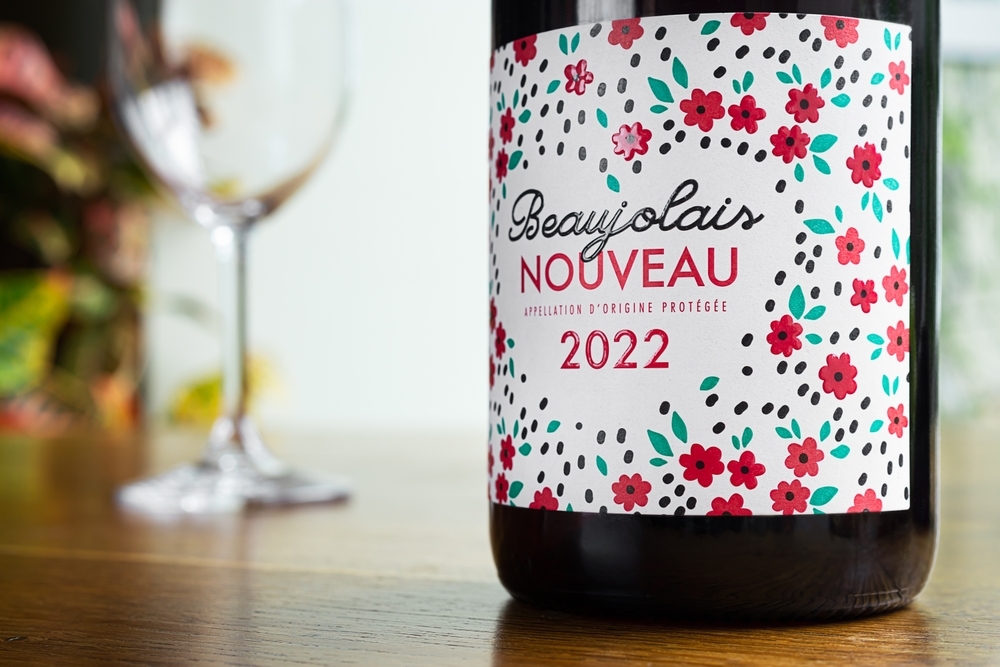The Top 10 Burgundy Wine Regions Famous For Their Wine Types

Burgundy, or Bourgogne as it’s called in France, is one of the most esteemed wine regions globally. Revered for its red and white wines, Burgundy has captivated wine enthusiasts for centuries. Burgundy stands out not just for its quality of wine but also for its deep connection to terroir, a French term referring to the unique combination of soil, climate, and human practices that shape a wine's identity.
Burgundy Wine
Burgundy's principal red grape, Pinot Noir, is known for delicacy and finesse. This thin-skinned grape is notoriously difficult to grow, but when done right, it produces complex, elegant, and age-worthy wines. Unlike fuller-bodied reds like Cabernet Sauvignon, Burgundy's Pinot Noir typically offers a lighter body with vivid red fruit flavors (think cherries, raspberries, and strawberries), earthy undertones (like forest floor and mushrooms), and subtle floral or herbal notes. The wine’s flavors are deeply tied to the nuances of the vineyard site, from the type of soil to the slope of the land.
Learn More: Why Modern Stemless Wine Glasses Are Perfect for Any Setting
On the white side of Burgundy is Chardonnay, a grape that offers an incredible range of styles based on where it’s grown and how it’s vinified. Unlike many New World Chardonnays, which tend to be heavily oaked and buttery, Burgundy’s Chardonnays can range from crisp, steely, and mineral-driven (particularly in Chablis) to rich, nutty, and full-bodied (as seen in the wines of Meursault or Puligny-Montrachet). The region also grows Aligoté (a zippy, high-acid white wine) and Gamay (the grape of Beaujolais, which we'll touch on later).
The Importance of Burgundy Terroir

What makes Burgundy genuinely unique is its dedication to terroir. The notion that every parcel of land (or climate) imparts a distinctive character to the wine is at the core of Burgundy’s winemaking philosophy. Even vineyards located within a few meters of each other can produce vastly different wines because of subtle changes in soil composition, sunlight exposure, and drainage.
This meticulous division of the land into specific plots means Burgundy is home to an intricate Appellations d'Origine Contrôlée (AOCs), which regulate how and where wines can be made. The system can initially seem intimidating, but it’s designed to reflect the importance of terroir in each bottle.
Check This Out: Check Out The Best Wine Pairings with Oysters Combinations
Top Burgundy Wine Regions
Chablis
Chablis is famous for its Chardonnay wines, which are described as steely, crisp, and mineral-driven. This is due to the region's cool climate and unique Kimmeridgian limestone soils, which impart a distinctive flinty quality to the wines. Chardonnays from Chablis are usually unoaked, allowing the mineral and acidity to shine. These wines are fantastic with oysters, seafood, and light dishes where the fresh, clean flavors of the wine can take center stage.
Côte de Nuits
Situated in the northern half of the Côte d'Or, the Côte de Nuits is a renowned region in Burgundy for Pinot Noir. The villages of Gevrey-Chambertin, Vosne-Romanée, and Chambolle-Musigny produce some of the most delicious red wines in the world. These wines have depth and complexity and can age for decades. Expect dark berries, earth, truffles, and spice flavors, and a robust structure that mellows beautifully with time.
Côte de Beaune
Côte de Beaune is renowned for Pinot Noir and Chardonnay, made in villages like Pommard and Volnay for reds and Meursault and Puligny-Montrachet for whites. White Burgundy from the Côte de Beaune is rich, full-bodied, and opulent and found in ripe apples, pears, butter, and hazelnut flavors. While elegant, red wines from this area can be more rustic and earthier than the more polished wines of Côte de Nuits.
Côte Chalonnaise
The Côte Chalonnaise has places called Mercurey and Givry that produce some of the best red wines from this area, while Rully is known for producing outstanding Chardonnay. The wines are fresher and more cost-effective than their counterparts. Côte Chalonnaise is an excellent region for discovering affordable Burgundy wines with great character.
Mâconnais
South of Côte Chalonnaise lies the Mâconnais region, primarily focused on Chardonnay. Wines from Mâcon, such as Mâcon-Villages and Pouilly-Fuissé, are known for their fruit-forward style and minerality, making them approachable and perfect for everyday drinking. Pouilly-Fuissé, in particular, can rival some of the more expensive white Burgundies from Côte de Beaune with its freshness and richness.
Beaujolais
Beaujolais has a distinct identity thanks to its focus on Gamay rather than Pinot Noir. Beaujolais wines are light and fruity, especially young, though certain cru Beaujolais (from villages like Morgon or Fleurie) can be more structured and age-worthy. The bright red fruit flavors and soft tannins make Beaujolais a versatile pairing wine, perfect for casual meals, charcuterie, and even Thanksgiving dinner.
Gevrey-Chambertin
One of the crown jewels of the Côte de Nuits, Gevrey-Chambertin produces some of Burgundy's most influential and age-worthy Pinot Noirs. These wines are known for their robust structure, dark fruit flavors, and earthy, sometimes gamey undertones. Gevrey-Chambertin is home to some of Burgundy's most prestigious Grand Cru vineyards, including Chambertin and Clos de Bèze.
Meursault
Meursault, located in the Côte de Beaune, is famous for its rich Chardonnay wines. These wines often exhibit buttery, nutty flavors, ripe stone fruit, and honeyed notes. While Meursault wines are typically aged in oak, the best examples maintain a balance of freshness and richness. Meursault is a must-try for fans of full-bodied, expressive white wines.
Vosne-Romanée
Vosne-Romanée is home to some of the world's most expensive and sought-after wines, including Romanée-Conti and La Tâche. These Pinot Noirs are the epitome of finesse, combining power, elegance, and longevity. Vosne-Romanée wines often feature dark fruit flavors, exotic spices, and an ethereal, almost perfume-like quality.
Puligny-Montrachet
Puligny-Montrachet is in demand for its finest Chardonnay wines. These wines are more structured and rich in minerals than wines with bright acidity and flavors of citrus, white flowers, and flint. Wines from Puligny-Montrachet can age gracefully for years, developing layers of complexity over time.
Wine Pairing Tips for Burgundy Wines
Red Burgundy with Roasted Poultry
One of the classic pairings for Pinot Noir is roasted poultry, such as chicken or duck. The wine's acidity and light tannins complement the bird's crispy skin and rich flavors, while its red fruit notes add a refreshing contrast.
White Burgundy with Seafood
Chablis's mineral-driven, crisp whites are a match made in heaven for seafood. Enjoy oysters, scallops, or grilled fish. With its high acidity and minerality, a Chablis will enhance the dish's flavors without overpowering it.
Burgundy And Mushrooms
Both red and white Burgundy wines pair beautifully with earthy dishes featuring mushrooms, truffles, or root vegetables. The earthy undertones in Pinot Noir taste better with mushrooms' natural umami flavors, and the minerality in Chardonnay adds a refreshing lift to the dish.
Light Meats with Beaujolais
Beaujolais light body and bright fruit flavors go well with lighter meats like pork, turkey, or grilled sausages. Its low tannins make it an easy-drinking wine that pairs well with various foods.
White Burgundy with Creamy Sauces
A full-bodied Chardonnay from the Côte de Beaune or Meursault goes with more decadent dishes with creamy, buttery sauces. The wine’s richness and slight oakiness pair with the dish's creaminess, while its acidity will cut through the richness, keeping the flavors balanced.
Also Read: Essential Wine Tasting Terms: Learn the Language of Wine
Conclusion
Burgundy wines are as complex and alluring as the regions and villages of Burgundy itself. Something is enchanting about the way Burgundy wines convey the land they originate from, whether it's through a rich Meursault, a flinty Chablis, or a robust Pinot Noir from Gevrey-Chambertin. Try these wines and use careful pairing guidelines. You'll have no trouble understanding what Burgundy is.
This content was created by AI
No keywords available
-1717753922-r.jpg)


